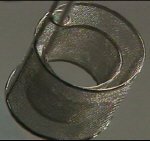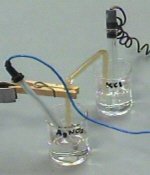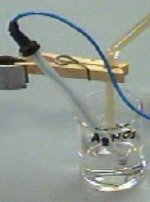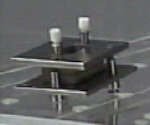Conductivity
cell
Cuvette
Electrochemical cell
Electrogravimetric cell
Electrolysis cell
Galvanic cell
Half cell
Infrared cells
Potentiometric cell
UV / Visible spectroscopic cell
This comprises two electrodes and is used measure the conductance of a solution with the help of a conductimeter.
Cuvette
UV / Visible spectroscopic cell
A prismatic container with a specified path length made of glass, silica or polystyrene and used to carry out UV / Visible spectroscopic measurements.


A device comprising two electrodes
immersed in conducting solutions.
In the majority of the cases, the
electrolyte solutions surrounding each electrode aredifferent and are separated
to avoid chemical reactions.
So that the electrical current can
circulate, the two solutions are connected by an electrolytic junction, e.g.
a salt bridge.


A particular cell used in a quantitative method of determining metal ions in aqueous solution based on the electrolytic reduction of the ions one by one.
An electrochemical cell which is used to carry out oxidation reactions at the anode and reduction reactions at the cathode.
This is an electrochemical cell
capable of producing electrical power.
Oxidation reactions at the anode
release electrons spontaneously into the electric circuit.
These electrons are used at cathode
to carry out reduction reactions.
A galvanic cell consists of two half-cells of different potentials.


Infrared cell for gases:

Infrared cell for solutions:

Electrochemical cell used to
measure the potential difference between two electrodes.
In general, there is a measuring
electrode and a reference electrode.
The potential of the measuring electrode
of measurement depends on the medium which surrounds it.
The common reference electrodes
are the standard hydrogen electrode or, more practically, the calomel electrode.
Reference electrodes are separated
from measuring electrodes by an electrolytic junction, e.g. a salt bridge.
In this way the conditions characteristic
of the reference electrodes are not compromised by the components of the sample
being measured.